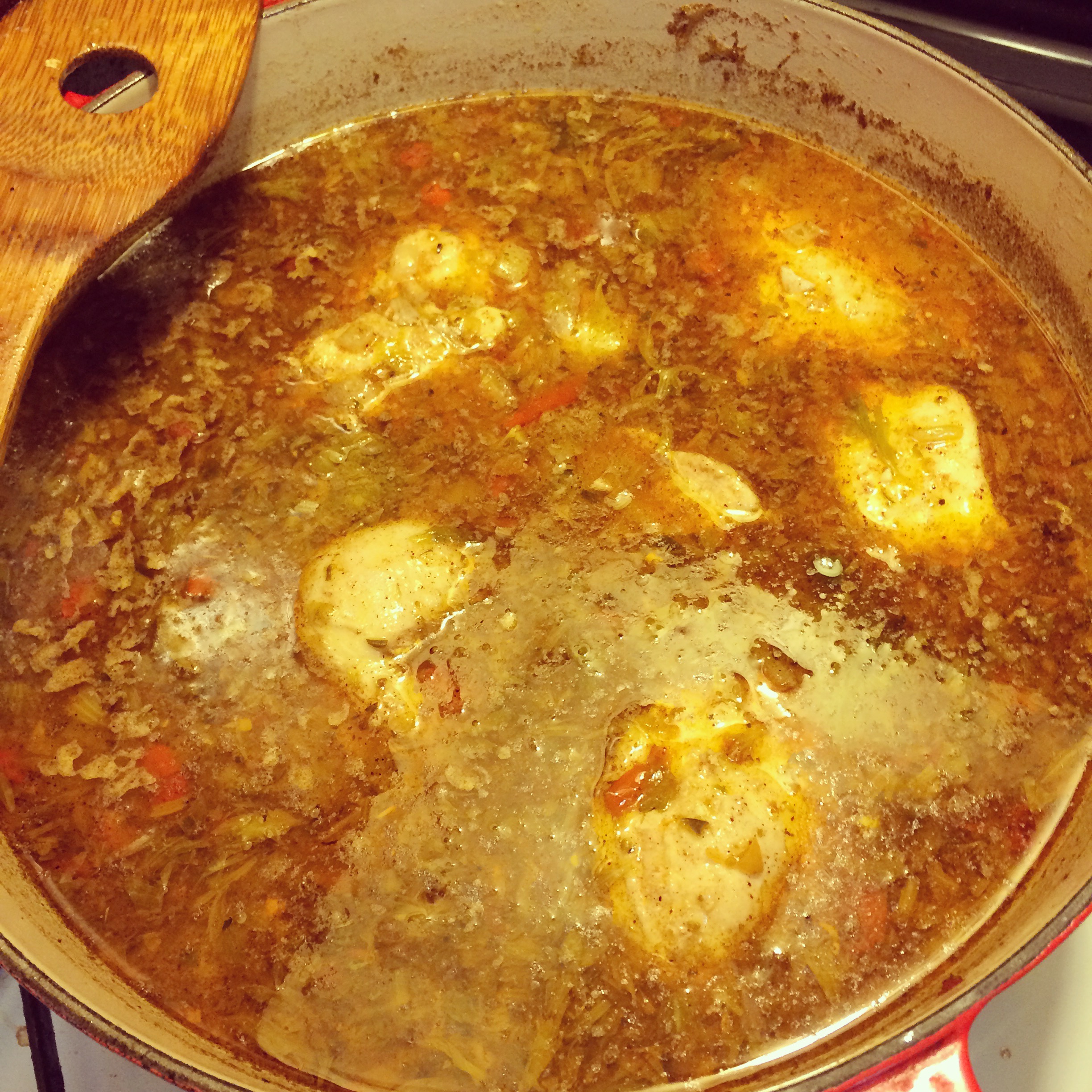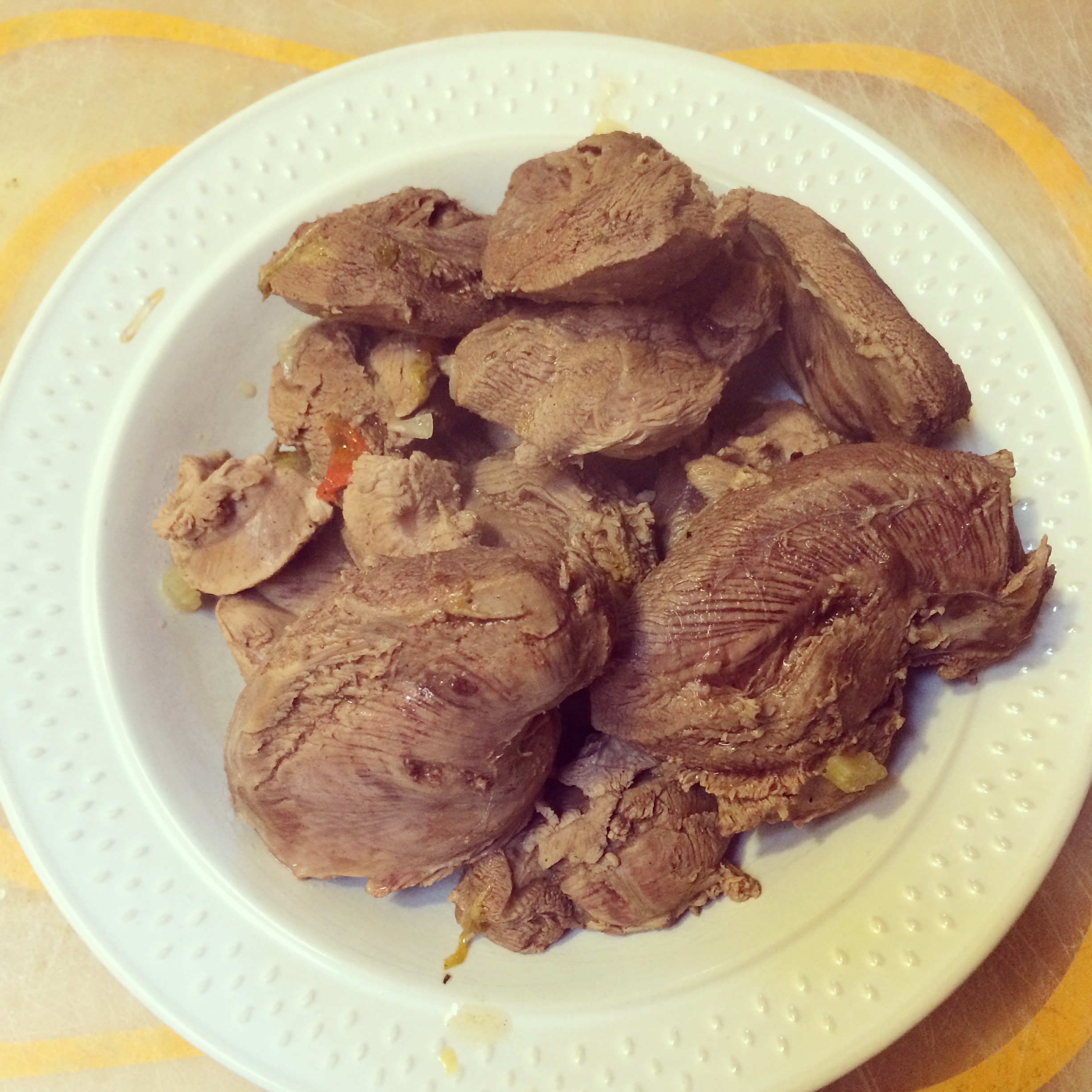Duck fever? Try duck gumbo...
/One of the passions Don has passed down to his two sons is duck hunting. Fortunately for me, I also paid attention after holiday season duck hunts when Momma Chaney was in the kitchen. As a result, I probably like to cook more than I like duck hunting — especially when hot peppers are involved.
Duck huntin' lawyers
After opening weekend this season, we found ourselves with a couple dozen duck breasts left from a sizable group of hunters. This, my friends, is the perfect reason to make duck gumbo. Wait, you don't like duck because it's gamey? You sound like my wife. But even she had seconds and leftovers. Here's the "recipe".
Disclaimer: I've made gumbo so many times I don't follow a strict recipe, but instead work with a loose set of ingredients. The basic steps are: make a roux; fry up the Louisiana trinity; and add some broth, meat, and veggies. Artistic license is welcome. Anyway, here are the steps from my most recent batch (remember to read first and do your prep work!):
Bacon:
Cook at least a pound of bacon on a cookie sheet in the oven at 375 degrees until the fat is rendered and the bacon is pretty crispy. The bacon grease will pour easily out of the cookie sheet. Try not to eat all the bacon at once.
You can do this in a skillet, but the oven method yields the most grease with the least amount of burnt bacon, stirring, and cursing. Ask my Uncle Chuck what happened with his bacon at 5:30 am on Thanksgiving morning this year, and you'll know what I'm talking about.
Roux:
1/2 cup bacon grease
1/2 cup flour (wheat, rice, arrowroot, whatever your fancy, the Cajuns weren't/aren't picky)
Heat the oil in the biggest dutch oven you can find until a drop of water sizzles in the bottom. You want the heat pretty high but not full blast. Slowly stir in the flour until it's evenly mixed. You want enough flour so that the grease isn't watery, but not so much that the roux looks grainy and stacks up into little mounds; nice, small, quickly-filling tracks should follow your whisk. It will look something like this when you start:
Keep stirring steadily as the flour darkens (you don't have a whole lot of time here to chop up the veggies for the next step, so do that before you start the roux). It will take a while, but your patience will be rewarded. The darker the roux, the richer the flavor. A good friend once told me that a good gumbo roux should be the color of a dirty penny; I've also heard comparisons to Hershey's chocolate. Here's where I stopped:
Once the roux is good and brown, add the veggies. I usually add:
1 head celery, diced (6-9 stalks, including all but the most white little ones, keeping the leafy parts)
2 large onions, diced
Enough diced peppers to provide about the same bulk as the celery (bell, jalapeno, poblano — we grow peppers and use whatever's available, and you can remove the pith to minimize heat for the faint of heart)
1 head garlic, minced
The addition veggies to roux creates what is undoubtedly my favorite smell in the entire world. You get something that looks like this:
Cook the veggies for a little bit, stirring regularly to keep the bottom from sticking. Once the onions start to turn clear, add some liquid to the party. I usually use a quart of chicken or beef broth plus enough beer/water to come most of the way up the pan, with the understanding that I'll cook a lot of the water out over the next couple of hours. It looks like this:
Once you've added the liquid, make sure to stir well to dissolve all the nicely browned flour.
The next step, usually, is to poach some form of meat. Heat the broth until it's boiling and toss some meat in. You can use whatever you have on hand. I've used sausage, bacon, chicken, turkey, duck, crab, oysters, shrimp, redfish, venison, and beef in gumbo, and I'm probably missing a few. Traditionally gumbo was a melting pot type of dish. I usually don't add seafood until the gumbo's almost done, but you do want to get other types of meat cooked at this step while the gumbo is a thin broth. Below are photos of poaching chicken and duck:
This gumbo has about 3 pounds of chicken and about 4 pounds of duck breasts. I like to shred chicken into long, thin strips, which has a similar visual appearance to using crab in gumbo. The duck I dice finely, as we shoot our own duck and the only one who likes steel shot in gumbo is your dentist.
One of the things I remember from being a kid is a catfish restaurant named Kreg's. I once heard the secret ingredient was the catfish, which was rinsed in ice water four times before being breaded and fried. Whatever they did the catfish was great.
I almost always process duck at least twice to remove the gamey flavor that keeps my wife from eating it (you would think an oysterman's granddaughter would like duck). For instance, when I grill duck I'll slice it first, brine the slices 4 times in cold water for about 10-15 minutes apiece, and then wrap in bacon and a pepper slice. That process provides a beefy but not gamey taste.
When cooking duck in gumbo, I brine whole breasts several times before I poach them. Something I recently started doing is frying the finely diced, poached duck in bacon grease after I poach it. It gives the small pieces of duck great texture and helps with the gamey flavor. My wife was impressed at this batch of gumbo.
Once you've got your meat chopped up and added back to the broth, it's time to add a large can (28 oz or so) of whole peeled tomatoes, a large can (same size) of diced tomatoes, and a tablespoon or two of tomato paste. For spices, I usually add a couple of bay leaves, a palmful each of oregano and thyme, a generous shake of cayenne pepper, about 1/8 cup of Worchestershire sauce, and a generous grind out of a pepper mill (I add salt at the end, since you're cooking off a bunch of water during the process). I might add some paprika for color. This is all to taste; I quit measuring ingredients for gumbo as a teenager, and instead tried to make it taste like the kind Momma made out of the Southern Living cookbook.
Once you add all this stuff, you'll get to a point where the pot's almost full. If it's not, add some water until it looks like this:
Simmer the gumbo down a long while over very low heat. Go watch a quarter of a football game, train the new puppy, take a walk with the kids. The longer, the better.
Once it's getting close to time to eat, you can add a pound or two of okra if you like, although one of my northern Louisiana friends complains about that (Kendal also uses roux from a jar, so there's a credibility issue to consider). If you're using seafood, now's the time to add it as well. You want to start your rice and cornbread about this time as well so everything's done at the same time. You'll get a nice, thick, soupy result that looks like this:
We serve our gumbo with rice and cornbread. Here's the finished product:
Duck hunting is one of my favorite ways to enjoy the outdoors — but I find cooking gumbo from the result of the hunt even more relaxing. I hope you enjoy it as much as I do. Cheers.





